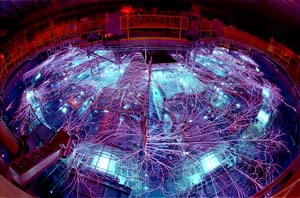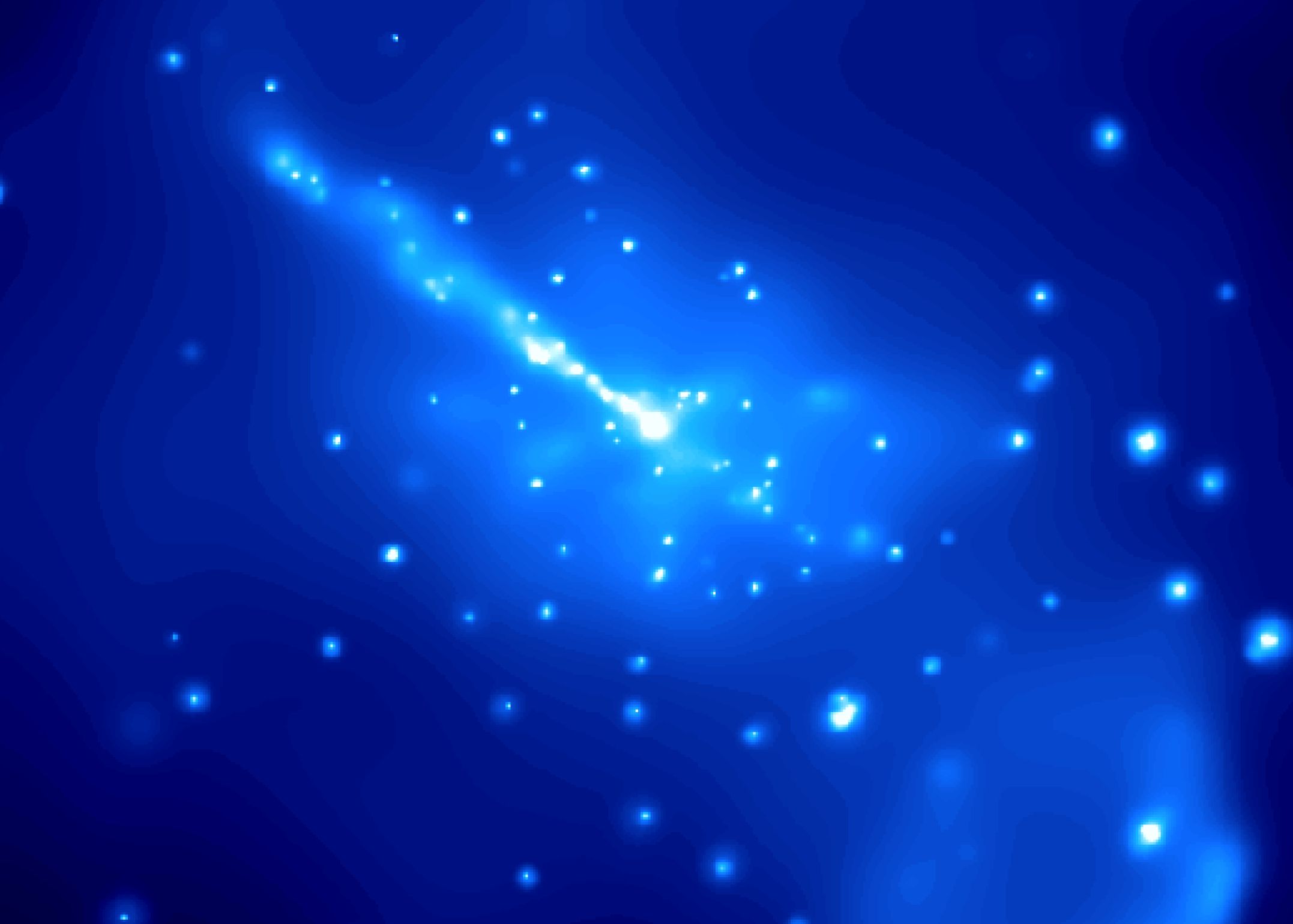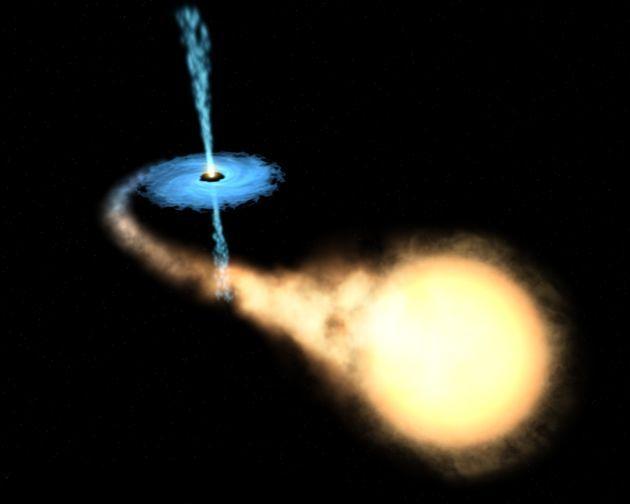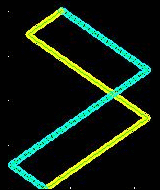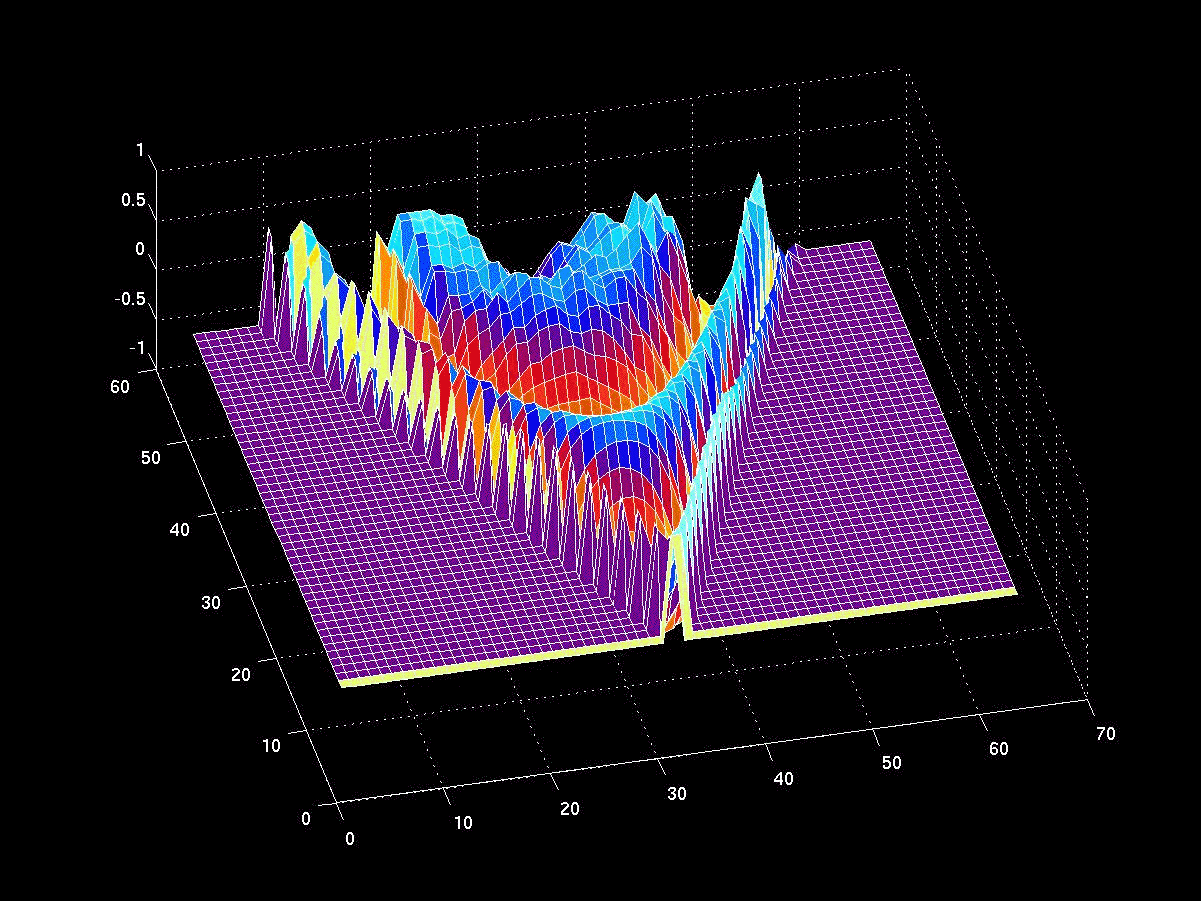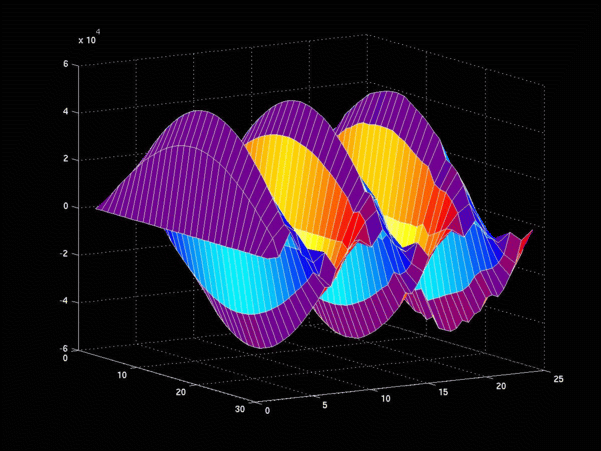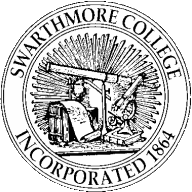
I am currently a research assistant in the Department of Physics and Astronomy at Swarthmore College.
Working with Professor David Cohen, I used the computer simulation codes Visrad, Helios, and Spect3D (Prism Computational Sciences, Inc.) to analyze the effects of changing the laser beam pointings and halfraum geometry in inertial confinement fusion (ICF) experiments. We published a paper [PDF] in the Journal of Physics of Plasmas in May 2004 which reports on the results of a series of ICF experiments carried out on the OMEGA laser and of our modeling of those experiments.
My most recent work explores the astrophysical applications of the aforementioned simulation codes as related to the gas cell experiments conducted at Sandia National Laboratories Z facility. Our goals for this phase of the research are to
-
benchmark and test our current spectral models for photoionized plasmas, which are characteristic of some of the highest energy x-ray sources, like neutron stars, x-ray binaries, and active galactic nuclei (quasars);
-
conduct scaling studies in an effort to design new gas cell experiments to be run on the Z machine;
-
synthesize new diagnostics of the photoionized plasma in the form of time-resolved absorption and emission spectra.
In September 2004, I presented a poster [PDF, JPEG, GIF] at the Sigma Xi student research poster session at Swarthmore College which detailed some preliminary work I had done on the gas cell project. I also had the honor of attending the 205th meeting of the American Astronomical Society (AAS) in San Diego in January 2005, where I presented a poster entitled "Numerical Modeling Studies of X-ray Photoionization Expermiments Driven by Z-pinch X-rays" [PDF, JPEG, GIF].
I have just recently completed my Honors thesis [PDF] on my work modeling the gas cell experiments. As part of my Honors examinations in May, I will be required to defend this thesis during an oral examination administered by an external examiner.
